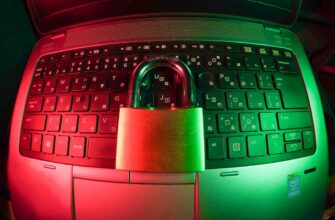- Introduction: Why Bitcoin Safety Matters
- Choose a Reputable Cryptocurrency Exchange
- Secure Your Exchange Account
- Complete Identity Verification (KYC)
- Select a Secure Payment Method
- Transfer Bitcoin to Your Personal Wallet
- Stay Vigilant Against Scams
- FAQs: How to Safely Buy Bitcoin
- Conclusion: Safety First, Always
Introduction: Why Bitcoin Safety Matters
With Bitcoin’s growing mainstream adoption, learning how to safely buy Bitcoin is crucial for protecting your investment. Cryptocurrency transactions are irreversible, and scams are rampant—making security your top priority. This 900-word guide breaks down the process into actionable steps, helping beginners navigate exchanges, wallets, and threats while minimizing risks.
Choose a Reputable Cryptocurrency Exchange
Your first line of defense is selecting a trustworthy platform. Look for:
- Regulatory compliance: Platforms registered with authorities like FinCEN (US) or FCA (UK)
- Security features: Cold storage for funds, SSL encryption, and insurance policies
- User reviews: Check Trustpilot and Reddit for consistent positive feedback
- Transparent fees: Avoid exchanges with hidden withdrawal or conversion charges
Top recommended exchanges include Coinbase, Kraken, and Binance—all offering robust security protocols and user-friendly interfaces.
Secure Your Exchange Account
Once registered, fortify your account:
- Create a strong password (12+ characters with symbols, numbers, uppercase/lowercase)
- Enable two-factor authentication (2FA) using Google Authenticator or Authy—never SMS
- Whitelist withdrawal addresses to prevent unauthorized transfers
- Use a dedicated email with 2FA for crypto activities only
Complete Identity Verification (KYC)
Know-Your-Customer checks are mandatory on regulated platforms. Safely submit documents by:
- Uploading clear photos of government-issued ID (passport/driver’s license)
- Ensuring the exchange uses encrypted data storage
- Avoiding platforms that skip KYC—they’re often unregulated and risky
Select a Secure Payment Method
Different payment options carry varying risks:
- Bank transfer (ACH): Low fees but 3-5 day processing. Safest for large purchases.
- Debit/credit cards: Instant but higher fees (~3-5%). Riskier due to chargeback fraud exposure.
- Third-party apps (PayPal, Venmo): Convenient but check crypto withdrawal permissions.
Always verify transaction details before confirming. Never share card/CVV details via email or chat.
Transfer Bitcoin to Your Personal Wallet
Never store coins long-term on exchanges! Move them to:
- Hardware wallets (e.g., Ledger, Trezor): Offline devices immune to hacking. Ideal for large holdings.
- Software wallets (e.g., Exodus, Electrum): Encrypted apps for smaller, frequent-use amounts.
Transfer process: Copy your wallet’s unique address, paste it in the exchange withdrawal field, do a small test transfer first, then move the full amount.
Stay Vigilant Against Scams
Common threats and how to avoid them:
- Phishing sites: Double-check URLs—scammers mimic exchanges with slight misspellings
- Fake support: Legitimate exchanges never ask for passwords via email/DM
- “Investment guarantees”: Avoid platforms promising fixed returns—Bitcoin is volatile
- Social media giveaways: Ignore “send BTC to receive double” schemes
FAQs: How to Safely Buy Bitcoin
Q: Is buying Bitcoin anonymous?
A: No. Regulated exchanges require ID verification. For privacy, use decentralized exchanges (DEXs), but they carry higher technical risks.
Q: What’s the minimum amount I can buy?
A: Most exchanges let you purchase as little as $5-$10 worth of Bitcoin (fractional BTC).
Q: How long does a Bitcoin purchase take?
A: Card purchases are instant. Bank transfers take 1-5 days. Blockchain transfers to wallets require ~10-30 minutes.
Q: Can I reverse a Bitcoin transaction?
A: No. Once confirmed on the blockchain, it’s permanent. Always verify addresses before sending.
Q: Are hardware wallets worth the cost?
A: Absolutely if holding over $500. A $50-$150 wallet protects against exchange hacks—cheap insurance for your investment.
Q: How do I report crypto scams?
A: In the US, file with IC3 or FTC. Provide transaction IDs and scammer details.
Conclusion: Safety First, Always
Buying Bitcoin safely hinges on due diligence: vet exchanges, lock down accounts, use secure payments, transfer coins to private wallets, and stay alert. By following this framework, you’ll build confidence while shielding your assets from evolving threats. Start small, prioritize education, and remember—in crypto, you are your own security guard.








